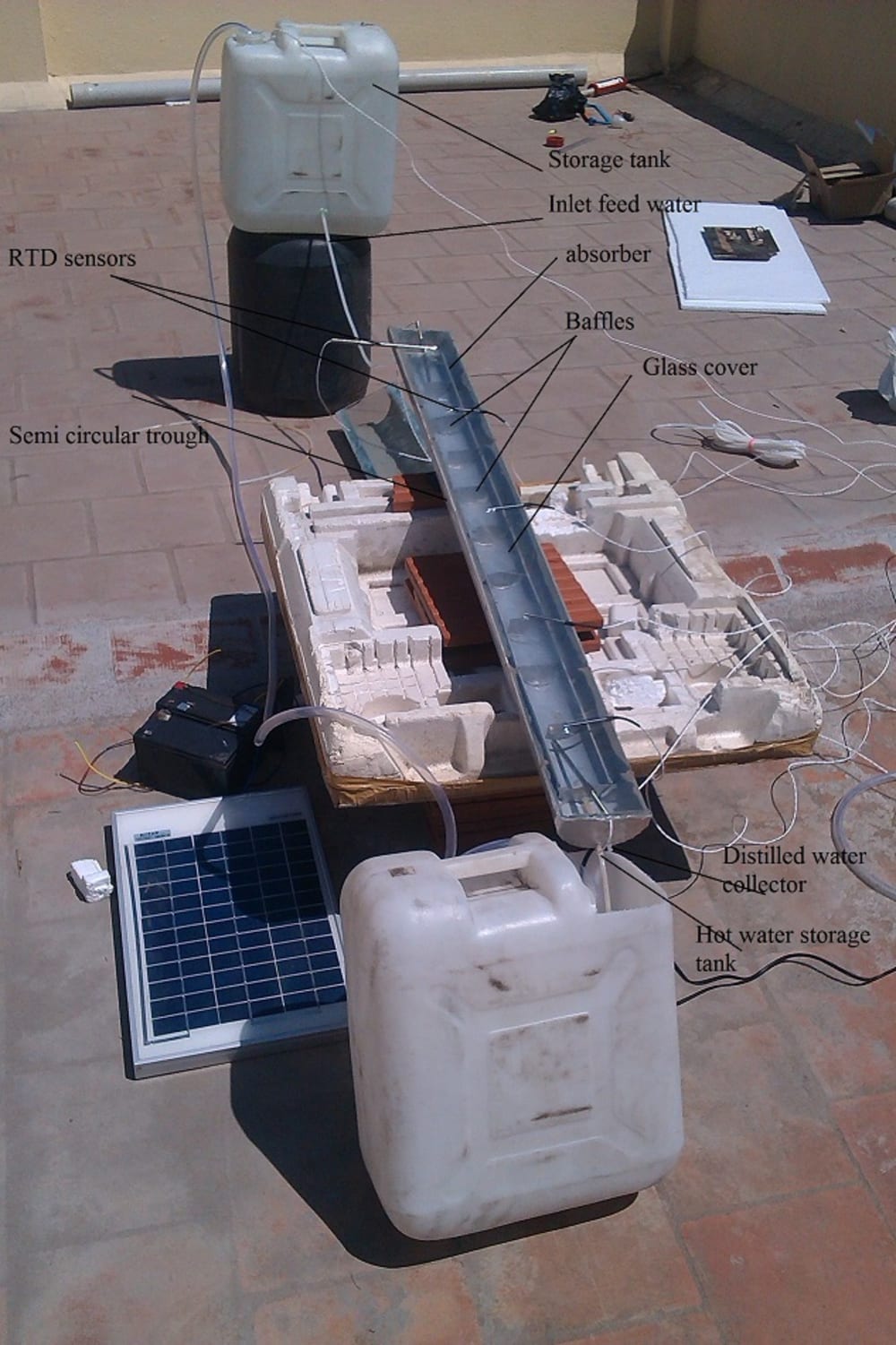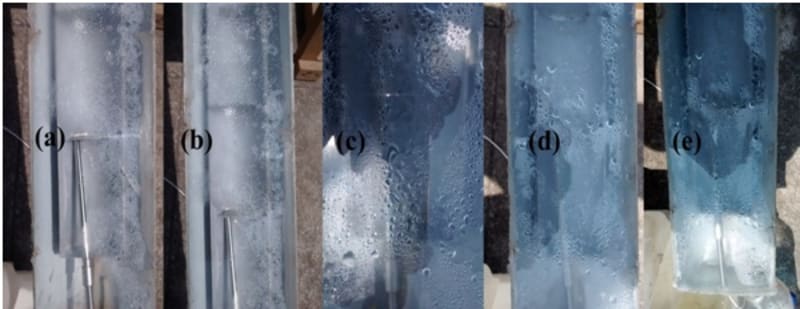This work presents the experimental investigation of improved inclined solar still. Many researchers going for various configurations in-order to improve the efficiency and also for augmentation of fresh water from the solar still. An experimental investigation was carried out to see the performance of a improved inclined semicircular trough solar still. A semicircular absorber is placed inside the trough and water is continuously fed into it. To increase the time of contact of the water baffles at a distance of 0.01m were placed. Experimentation's were carried out in the hot and humid climatic conditions of Chennai with a constant flow rate of 0.133 kg/min. Results shows that the hot water collected is about 65 degree Celsius in the hot water storage tank and amount of distilled water collected is 2.1 kg/m2/day. This is normally higher in the case of other conventional solar still. The main aim of this work is to improve the fresh water production and study the possibilities of its use as distiller as well as heater. Experimentation were carried out in the hot humid climatic conditions of Chennai. The schematic diagram of the solar still is show in fig. 1
Fig.2 shows the photographic view of the experimental setup. A PVC pipe of 0.1m x 1.2m and 0.6m x 1m were chosen to be the trough and absorber respectively. In the absorber baffle plates were placed at a consecutive distance of 0.1m. A glass with a thickness of 3mm chosen as a cover to transmit the solar intensity into it. Flow control valve is kept to control the flow rate of water into the absorber. The inclination of the trough is about 11 degree. High precision RTD sensors were used to measure the various nodal points of the solar still. Various nodal points were; water at the inlet and outlet, inlet feed water, hot water and glass temperatures.
Fig. 3 shows the accumulation of fresh water on the glass at different time interval. During the start of the experiment the formation of water droplets are smaller where it can be observed in Fig. 3(a). At 10 am the accumulation of water droplets are larger which can be seen in Fig. 3(b). This is due to the fact that the increase in contact time of water in the absorber which increases the temperature of water quicker than the solar still without baffle plates. Fig. 3 (c) shows that after reaching the maximum intensity the droplets formed is higher in this case. This is due to the variation of wind velocity in the coastal area. The unsteady wind velocity on the cover increases the rate of condensation. Fig. 3(d) and (e) shows the phenomenon that due to the lower heat flux rate the condensation of water getting reduced.
In this study an attempt has been made to utilize the still not only for water purification, as well as for water heating.
Like this entry?
-
About the Entrant
- Name:Ravishankar Sathyamurthy
- Type of entry:individual
- Patent status:none








